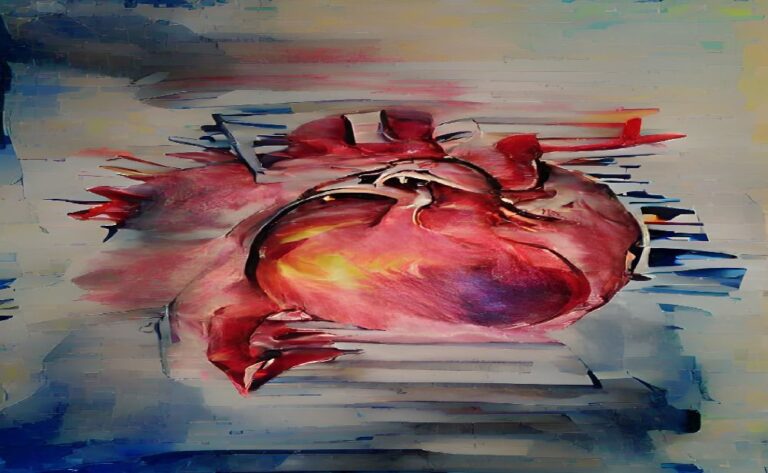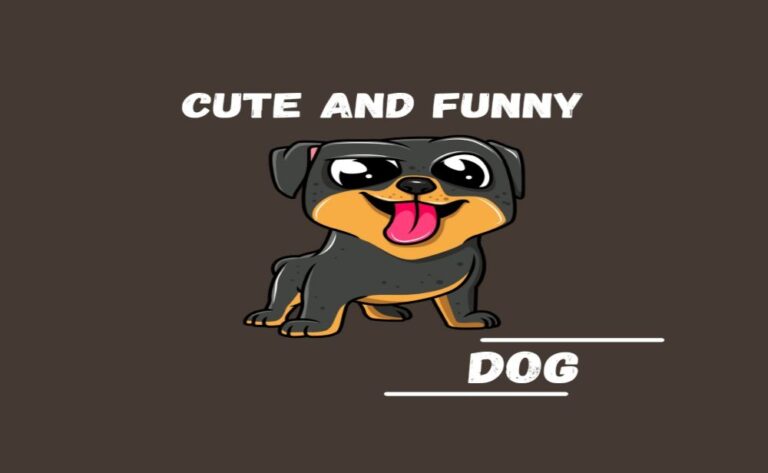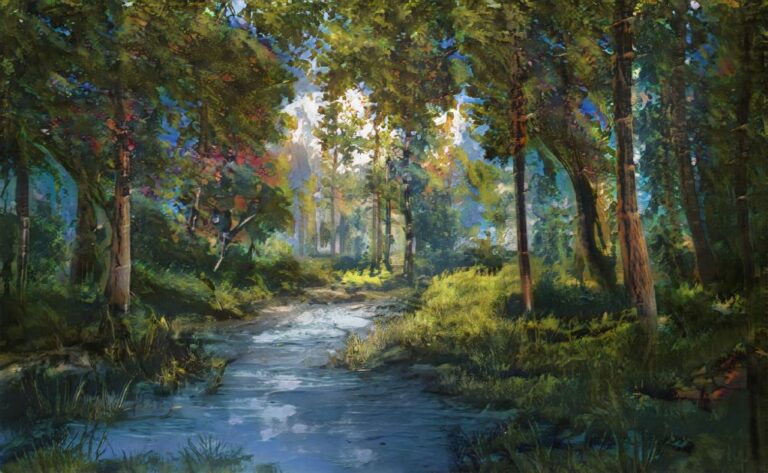
If you are an artist or someone with a passion for art, NFT photos represent a unique opportunity. We live in a digital era, therefore it was only a matter of time before art became entirely digital. With the advent of blockchain technology and NFTs, this time has come. Continue reading to learn all about the best NFT photographs and how you can benefit by converting your own images into NFT.
Best NFT Images Reviews
The Initial 5 000 Days
The First 5000 Days NFT Image is now the most expensive piece of NFT artwork ever sold. Before selling this NFT image for $100, Beeple had only ever sold a print. This work of NFT art is comprised of 5,000 unique pictures. The artist created each of these digital images day after day.
Replicator NFT
Replicator is a photocopier, which was formerly one of the most popular office tools but is now almost forgotten. Mad Dog Jones has constructed a blockchain-based smart contract that generates fresh NFTs depending on the replicator. There is a slight chance that the “photocopier” will jam, preventing it from producing a fresh NFT.
Fidenza
This is a computer-generated image of Fidenza #313. It is a part of the Art Blocks Curated collection in which artists can build their own algorithms and the machine will generate art randomly based on the algo. Fidenza #313 seems to have been painted by a human being.
Doge
Internet-famous images of a dog called “Doge” have achieved widespread recognition. It first became a meme, then a cryptocurrency, and now the owner of this photograph is offering it for sale as an NFT. What began as a joke quickly became one of the most recognizable images on the Internet.
Internet programming language
The World Wide Web source code is an NFT created by Sir Tim Berners-Lee that represents the web’s source code. The owner of this NFT does not have the right to control the internet. It is intriguing that an error was discovered in the “code” as soon as it was published.
Crossroad
Crossroad is a contentious piece of art created by Beeple during election season. It depicts Donald Trump shirtless and covered in graffiti in the grass after losing the election. If Donald had won, the graphic would depict him racing through flames while wearing a crown.
Save Millions Of Lives
Save Thousands Of Lives is a project launched by Noora Health to save the lives of South Asian babies. The initiative is administered in 165 different hospitals, and according to their estimations, $1,235 can save one life. The image has earned $5,1 million, which represents a large number of lives saved.
Keep Free
Stay Free is an NFT created by Edward Snowden, the individual who revealed the NSA’s spying program. This NFT is composed of text-based artwork that depicts Edward Snowden. The phrases utilized for the artwork are actually the court documents that demonstrate the ruling that the NSA’s widespread spying breached the law.
The Initial Tweet
The First Tweet is a piece of NFT Image art that is a screenshot of the first Tweet, which was created by Jack Dorsey, the founder of Tweeter. The Tweet states, “Just establishing my Twitter.” Even though the owner of this NFT cannot alter the wording of this tweet, we can consider it a virtual signature.
How are the best NFT photos evaluated?
Our team of researchers had to construct a criterion in order to create the above ranking of the top NFT photos. We could have ranked the photographs according to their worth, but instead we’ve ranked them according to their impact.
Here are our criteria:
1. Impact – Did this artwork contribute to the NFT world’s increased popularity? Exists a real-world use case? We give preference to projects that made an impact in both the digital and “real” worlds.
2.Artist – Was the artist well-known before or after the creation of his first NFT work? We give preference to musicians who are “hidden treasures” but are not widely known. NFT unquestionably boosted everyone’s prospects of becoming a well-known artist. Before selling his NFT artwork for $69 million, Beeple, for instance, was not a household name.
3.Price – The price of the best NFT photographs is another crucial factor to consider. The greater the cost, the better it is. In the case of collectibles, however, price can have both advantages and disadvantages, depending on whether you are an artist or a purchaser.
Clearly, “Doge” is near the top of our list. Doge has effectively blended a community with a blockchain-based project. Most NFT and crypto projects fail to accomplish this.
The Doge blockchain project got so popular that Vitalik Buterin, the founder of Ethereum, and Elon Musk, the founder of Tesla and PayPal, have joined the Dogecoin board.
If Atsuko Sato had not taken a photo of her “Doge” and uploaded it online, none of this would be possible. Now that she has sold this photograph as an NFT, nothing else can be considered impactful art.
What are NFT photographs?
When the first NFTs were released, they were criticized because “everyone can download that image to their computer, so why would anyone pay for it?” Does the fact that you may download a photograph of the Mona Lisa indicate that you own it?
NFTs are a novel method for establishing ownership of a unique item. NFT Images are a subset of NFTs that are also saved on the blockchain. To simplify, let’s imagine that NFTs are unique goods that can be stored safely in a digital wallet.
Since this technology got more well-known, artists from all around the world have been experimenting with it. Some have “succeeded,” while others have yet to discover good fortune.
But what exactly determines artistic success?
If we judge success by the amount of money they made, we can say that thousands of billionaires were created overnight because to their NFT photos.
For some, it took years to earn anything, and for others, they never did. NFT photos have existed since the first one titled “Quantum” was published in 2014.
While some producers, such as Edward Snowden, have made millions from a single NFT, others, such as Greg Mike, have sold over a thousand unique photos and made millions in total.
What types of NFT images are available?
As you may already be aware, there are various types of NFT images. If you’re a creator, you’re certainly curious about the categories of photographs you can sell as NFT, so let’s find out.
Images – The most common static, digital, or hand-drawn images. Depending on the marketplace, you can sell all of them in a variety of formats. OpenSea, for instance, supports approximately 13 distinct formats (5 of which are for images). These might range from 8-bit characters to illustrated worlds.
Animations – Some of the most costly NFTs, including Crossroad, are animations. Using the Replicator NFT, you may generate GIFs as well as animations with sound. Feel free to express your creativity and greatest abilities.
3. 3D Models – You can even create 3D models for usage in games and VR/AR projects. glTF is an example of a file format supported by certain marketplaces, such as OpenSea.
Even if your native image format is not supported, you can put it in “Unlockable content” if it is supported by the marketplace. Thus, when the owner makes a purchase, he will have access to the specified files.
We anticipate that as the NFT ecosystem grows, more file formats will be supported. If you are unsure of which NFT marketplace to sell on, have a look at the rankings we have compiled.
Can a photo be converted into an NFT?
Yes, a photo can be converted into an NFT.
The NFT marketplaces have made it as easy as uploading a Facebook photo. You only need to submit your photograph, give it a name, write a description (if desired), and set a price.
That is, if you have already registered a marketplace account and set your NFT wallet. If you haven’t done any of these things, be sure to read our NFT University article on how to establish your own NFT.
If you have already set everything up, then allow us to provide you with a few tips for selling a photograph as an NFT.
Tips for selling your photograph as a non-profit image
Always upload content of the greatest quality. Since reuploading a photo multiple times can degrade its quality, you should only upload photos from their original source, be it your phone or a camera.
• Host the image elsewhere and link to it via unlockable content. If the marketplace has a maximum file size limit and your image exceeds it, you may host it elsewhere and offer a link. Not being on the blockchain, wouldn’t that defeat the purpose of the NFT? You would still sell the image as an NFT, but customers would be able to view it in the maximum possible quality.
• Provide an accurate description and classification. Certain artists have sold millions of dollars’ worth of NFTs without writing anything noteworthy about the art, but these are EXCEPTIONS. Nearly all NFT artworks sold are accompanied by a description that explains their purpose. Typically, NFT collections have a larger purpose, and their description is their selling point. On the other hand, classification will assist you in attracting new buyers who are researching the industry. Ensure that you place your artwork in the correct category.
• Keep rates reasonable. You should not set the price of your first NFT at $10 million simply because Beeple sold his artwork for $69 million. Try to set a pricing that will help you become a well-known artist in the NFT “circles.”
Why do NFT photos cost so much?
It is a widespread misperception that NFT photographs are expensive. Certain pieces have sold for millions of dollars, but does that imply that all do? The vast majority of NFT photos are reasonably priced.
You can compare it to paintings in the real world, but are all paintings inherently expensive? Especially if the artist is not well-known, the answer is no.
As with all other aspects of art, the price is determined by a mutual agreement. These tiny 8bit CryptoPunks selling for millions of dollars may seem odd, but they are among the earliest NFT collections ever.
The proverb “the early bird catches the worm” applies to collections such as “CryptoPunks” and “Bored Ape Yacht Club.” Due to the fact that they were among the first to implement NFT technology, their collection is among the most valuable.
Prices for NFT Images can range from less than a dollar to millions of dollars. However, NFT art with a price tag of millions of dollars does not always sell. If we’re talking about the typical income of a salesperson, that’s between $100 and $200.
What’s the catch, given that the vast majority of statistics indicate that the range is between $1,000 and $4,000? The issue with these data is that they include outliers like Beeple in their calculations.
If Beeple sold one artwork for $69 million and another for $1, the average price per artwork would be $34.5 million. Do you comprehend what we’re saying?
There is insufficient NFT artwork to calculate a meaningful average price, given the majority of overall sales volume is contributed by a few large NFT productions.
Why you should sell your artwork as a non-transferable gift
You may feel overwhelmed by the complexity of the NFT industry, but we are here to assist you. As you shall see, the benefits of selling your artwork as an NFT greatly exceed the disadvantages.
We are still in the infancy of blockchain technology. You have greater odds of success than someone who will join in two years. Early adopters always have a mass advantage over late adopters.
You currently have the opportunity to establish yourself as an artist or even a collector. There are numerous examples of artists who were barely surviving when selling original artwork but are now making millions.
If you are concerned about the technical aspects of NFT, you should not be. We’ve designed NFT University to provide you with everything you need to compete in this industry.
Now, let’s examine the advantages and disadvantages of selling your painting as an NFT.
Pros
• Become an early adopter – Since NFTs are relatively new, you can begin selling immediately and establish a following gradually. The competition is far less than in the physical art area, which is also an advantage.
• Reduced fees — Not just auction commission fees, but also delivery prices. If you are creating paintings, you can choose whether or not to send them to the NFT owner. The fees on the best NFT exchanges range between 0% and 15%. Typically, physical auctions charge 20-30% plus VAT.
• Easy-to-use markets – As previously said, the marketplaces are really easy to use. Typically, they have a classification scheme and a search filter. Thus, everyone will be able to choose an art that suits them, including your own. You need only consider an additional marketing approach that would facilitate the sale of your artwork.
• Remain anonymous – If you wish to maintain your privacy and concentrate on the creative process, then NFTs are appropriate for you. You need just reveal your username, not your actual name.
• Get paid in cryptocurrency — In some countries, cryptocurrency is exempt from taxation. This allows you to sell your artwork tax-free. Due to the fluctuating value of cryptocurrencies, holding the cash in your wallet may result in further profits.
• Copyright – No one can sell your work of art and claim that it is his. Once an NFT is created, it remains on the blockchain forever. The blockchain can be used to authenticate the ownership and authenticity of an artwork.
• Intelligent Contracts In addition to the ease of verifying ownership, what makes NFTs unique are their smart contracts. You may construct smart contracts to pay you royalties whenever your artwork is resold.
Cons
• Safety – When you sell NFT artwork, the proceeds are saved in your digital wallet. If you do not safeguard your private keys, a thief can steal monies from your wallet. It’s possible for someone to take money from a bank, although it’s far less often today.
• Costly transaction fees – Depending on the blockchain you use to sell your NFT artwork, transaction fees can be quite high. Currently, the most popular blockchain, Ethereum, has scalability issues that result in high transaction fees (Mostly for the buyers).
• Exchanges – You must locate a trustworthy exchange. There are a few trustworthy ones, but it’s not as simple as selling your artwork and collecting the cash.
• Environment – According to scientists, blockchain technology is unsustainable due to its high energy usage. By selling your artwork as a non-fungible token, you are contributing to the NFT. Nonetheless, the two most used consensus procedures are Proof of Work (POW) and Proof of Stake (POS). POW (Ethereum, Bitcoin, Dogecoin, Litecoin) consumes more energy because miners are required to verify transactions, whereas POS (Cardano, Polkadot, Tezos) is a more environmentally friendly technology. Consequently, environmental impact can be lowered by utilizing POS blockchains while developing an NFT. It is also important to note that Ethereum will shortly transition to POS.
What are the listing costs for NFT Images?
Surely you’re wondering, how much will this cost me? The listing fees for NFT photos vary by marketplace, but are typically free. However, commission rates often range from 0% to 15% each sale, with an average of 2.5% every transaction.
Registration on a marketplace is typically free of charge. Typically, you will only pay a fee when you sell an NFT. For instance, OpenSea will allow you to sell for free, but will charge a 2.5% fee once your NFT has been sold.
Compared to the standard 20% fee plus 30% VAT that you’ll have to pay at most physical auction houses, this fee is negligible. How cool is it that you may improve as an artist while keeping 97.5% of the earnings from your NFT Images?
There are also transaction costs, but they are typically covered by the buyer on most markets. Choose marketplaces that allow alternative blockchains to Ethereum if you want to keep prices as low as feasible for buyers.
If you sell your NFT Images on the Polygon blockchain, for instance, buyers will incur little transaction fees.
Some markets prohibit the sale of NFT Images unless you have been invited to do so. Others have a method in which your art must first be deemed worthy by the community or moderators. These “verifications” are time-consuming yet do not cost money.
Exist any hazards associated with purchasing or selling NFT Images?
As with all things in the world, there are always inherent dangers. Most of the risk associated with buying or selling your NFT stems from the possibility of having your wallet stolen if you are not diligent.
When creating an NFT wallet, you will receive a “seed phrase” consisting of 12 to 24 syllables. These phrases are your private keys, so you can use them to restore your wallet.
However, if someone else discovers your keys because you did not secure them, your money could be taken. Then, hackers will use these phrases to “restore” your wallet and transfer your cash to their wallet.
This is more of a risk associated with blockchain technology than NFT Images, but it is still a concern nonetheless. Imagine selling a work of NFT art for several million dollars, only to discover that the proceeds were stolen.
Other security risks are associated with NFT marketplaces. Always make purchases and sales only on reputable NFT marketplaces, and be cautious when providing access to your wallet. You should always verify the amount and the recipient’s address before sending money.
Swindlers adore blockchain technology because it is more complex than typical Internet content. When you decide to purchase or sell on a particular marketplace, you should investigate its legitimacy. We recommend sticking to the exchanges on our list of the finest NFT exchanges.
In addition to the exchanges, you should be cautious about where and how you store your cryptocurrency. Consider handling your cryptocurrency like waving your wallet in the favelas if you do it on a shared computer.
Tips to keep your digital wallet safe
• Do not store funds on an exchange. Regardless of how secure they may appear, exchanges are always susceptible to cyber assaults that could cause you to lose money. In 2014, the largest cryptocurrency exchange, Mt. Gox, which handled over 70 percent of all BTC transactions, was compromised. It’s estimated that around 850 thousand bitcoins were taken. This is a TON of money. To avoid this error, you should always store your cryptocurrency in your own wallet and only transfer it to an exchange when necessary.
• Store your seed phrase in a secure location. Seed phrase or seed recovery phrase refers to the 12 to 24 words you will receive when you create a new wallet. As tempting as it may be to save it in a notepad on your desktop, refrain from doing so. If someone gains access to your computer, you risk losing it. Instead, you should put the words on a piece of paper (or two) and hide it in a secure location. Ensure that you do not lose these words.
Diversify your assets. Diversify your wallets, as making them is largely free and there is no limit on how many you may have. For instance, you can create two distinct wallets and divide your funds between them. You will have a greater chance of keeping at least 50% of your data if you are ever hacked.
• Be wary of phishing applications. There are numerous free and easy-to-use mobile wallets; however, beware of phony applications that may steal your money. Always verify the app’s developer, and do not rely on ratings, as they may be fabricated.
Consider use a physical wallet. This wallet type encrypts and saves your private key, making it the most secure way to keep cryptocurrency. Check out our list of the best NFT wallets if you are unsure about which to use.
Can physical art be combined with NFT?
If you create physical art such as paintings, photographs, sculptures, novels, or anything comparable, you may question if you can include it with NFT. Yes, tangible art can be combined with NFT.
There are several ways to accomplish this task. The first and most obvious option is to simply photograph your artwork and sell it in this format. Since art is in the eye of the beholder, it is clear that the purchaser will not care.
However, there are techniques to significantly enhance the client experience for the purchasers.
Certain marketplaces, such as OpenSea, contain the previously mentioned “Unlockable content” functionality. Utilize this quality to your advantage. For instance, you can include your email address so that the buyer can reach you.
As soon as the purchaser contacts you, you can ship the item to him. However, there is one issue with this strategy, and it relates to the future owners. Once the NFT has been successfully sold and the artwork has been transported, you can no longer influence where the physical artwork is.
To remedy this, you might include a description stating that only the first bidder will receive the physical artwork, after which he will be free to do whatever he wishes with it.
Those of you selling digitally produced NFT Images can simply put the download link in the “Unlockable content” section if the marketplace supports it.
If, on the other hand, your images are photographs, you can ship them as described previously.
Regardless of the strategy you choose, keep in mind that customer experience is just as crucial with NFTs as it is with real art.
What are the best markets for NFT Images?
It can be challenging to pick where to sell your NFT photos due to the vast number of available marketplaces. Check out our rankings if you are curious as to which are the finest NFT marketplaces in general.
If you are an artist who intends to sell photographs as NFTs, however, you should seek a marketplace that specializes in NFT images.
Ephimera NFT Exchange
The Ephimera is a market that fits this description. This is a market for NFTs built on the Ethereum blockchain. On Ephimera, just two categories are available:
• Photographies
• Videos
This marketplace is great for people who wish to exhibit their photographic art to the globe. This marketplace does not support multiple editions, only unique pieces. Original developers will receive 10% of each resale as a royalty.
Foundation
Foundation is another suitable marketplace for NFT picture designers. The Foundation contains many more categories than the prior organization, which is the primary distinction between the two. From animations, photos, and digital sketches to three-dimensional creations.
There are over 91,000 NFTs on this market, and the number is expanding daily. Foundation utilizes the Ethereum blockchain and charges a 15 percent seller’s fee.
There are a number of exceptionally talented artists on this market, so expect stiff competition. Foundation only offers auction-style sales, but reserve prices can be imposed. Unlockable stuff is no longer a feature, which is a negative if you wish to offer additional items to your customers.
Hic et Nunc
This NFT market operates on the Tezos (XTZ) blockchain, resulting in significantly reduced minting fees than most other markets. Their website’s layout is somewhat different from what you are accustomed to, but their search tool is excellent.
Hic et Nunc is distinct from most other marketplaces in that nudity advertisements are permitted. This is excellent news for pornographic photographers and those who make such photographs.
Services fees are merely 2.5%, so you retain the majority of revenues. Additionally, you can use a variety of XTZ wallets, including:
• Spire
• Temple
• Galleon
• Kukai
This marketplace is not invitation-only; nevertheless, you must be confirmed by KnownOrigin in order to sell on their platform. This is both positive and negative, since it improves the quality of NFT art on their marketplace but prohibits novice artists from selling their work.
There are core and secondary marketplaces on KnownOrigin. The primary marketplace consists of creators’ original works of art, but the secondary marketplace is where resellers can sell the art they possess.
Original creators will receive 85 percent of each sale (a 15% commission fee will be deducted). Resellers will also earn 85%, with 12.5% going to the artist and 2.5% to the marketplace as commission costs.
There are various genres of NFT art sold on KnownOrigin, but the bulk consists of images, including animations and GIFs, and videos.
Mintable provides gasless minting, thus there are no fees associated with creating an NFT. Gas costs are really included in the selling price; buyers pay for them.
There are numerous categories on Mintable, including:
• Art
• Videos
• Collectibles
• Game Assets
• Music
• Domains
• Templates
Depending on the type of NFTs you manufacture, fees will vary. If you pick gasless minting, the commission price is 5%, compared to 2.5% for regular products.
Printable series is the ideal solution if you decide to compile 500 unique NFTs. You must submit 1 transaction to build the collection, but you may add an unlimited number of NFT photos. The commission cost for the printable series is 10%.
There are numerous additional markets where you can sell NFT Images. However, don’t limit yourself to the ones listed above, as they specialize in NFT Images and comparable artwork.
You should also review the rating of the best NFT marketplaces that we have provided, as it offers numerous benefits.
Can royalty fees be earned using NFT?
Yes, royalty fees can be earned with NFT. The majority of NFT markets have enabled artists to earn revenue even when their work is repeatedly resold.
On OpenSea, for instance, creators have the option to charge a royalty fee of up to 10%. This means that if your artwork is resold for 1 ETH at a 10% royalty rate, you will receive 0.1 ETH in royalties.
In contrast, marketplaces such as SuperRare charge a 10% fixed royalty fee. You will receive a royalty fee every time your artwork is resold.
If your artwork has the potential to be resold, this is a wonderful method to earn passive revenue. It’s also a big advantage in comparison to the classic auction houses where you’d have to sign a contract and put them as a mediator.
Such deals with auction houses can make you lose a big portion of your earnings in the process, while in the NFT space it’s all about the artists.
Digital artists now inhabit an entirely new universe, and we are thrilled to be a part of it.





